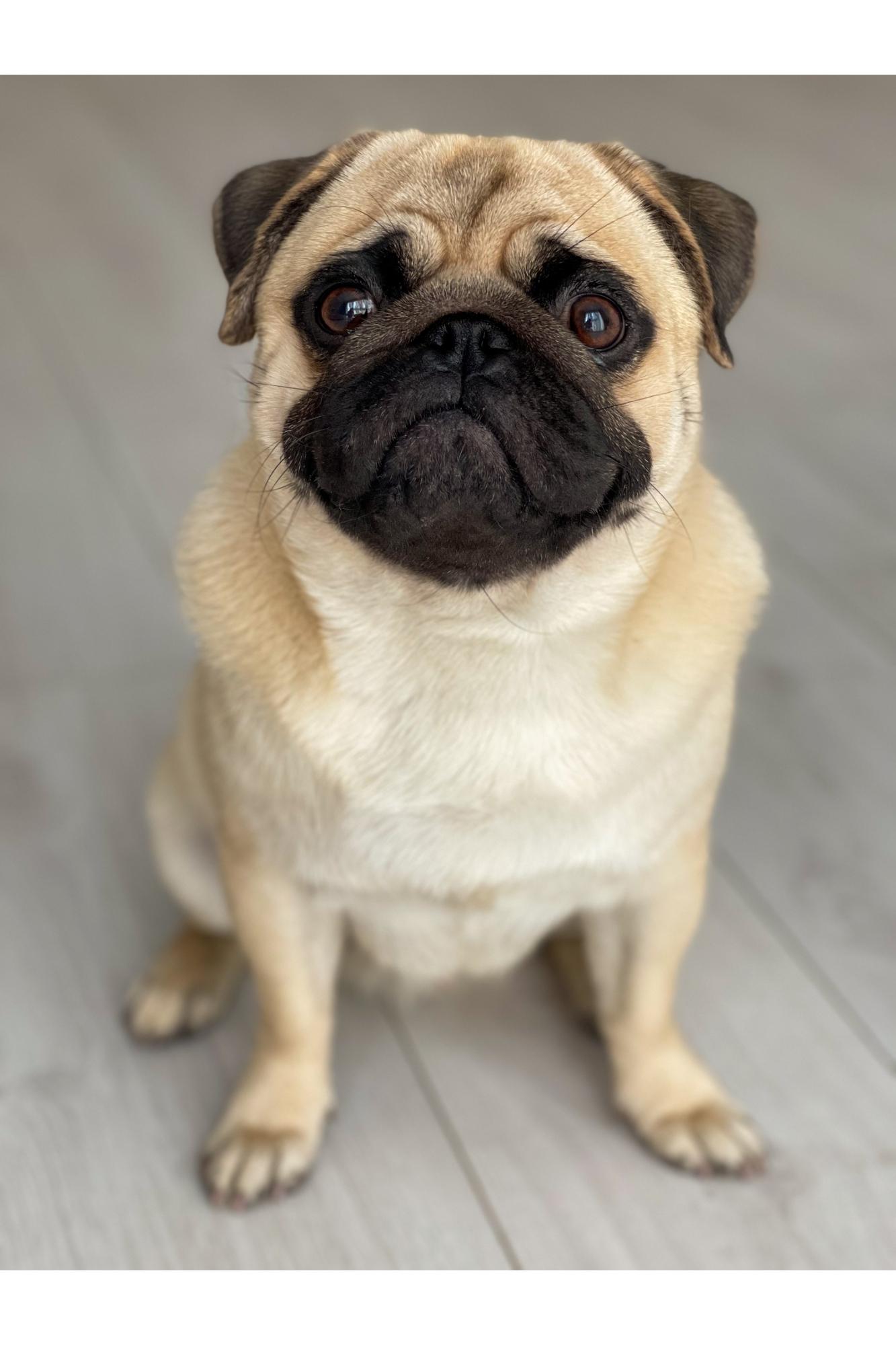PUG
| Group: | Toy |
|---|---|
| Size: | Small |
| Temperament: | Delightful, Loving, and Naughty |
| Height: | 10-13 Inches (male), 10-13 Inches (female) |
| Weight: | 6–9 kg (male), 6–9 kg (female) |
| Life Expectancy: | Over 10 years |
| Origin: | China |
| Coat Length: | Short |
| Coat Type: | Smooth |
| Color: | Black Fawn |
About
This breed has a long history and its ancestors were traders for the East India Company who brought them to Europe in the 16th century. It gained popularity among the aristocracy and royalty in Europe. The Pug is a small, strong, square dog that, despite its stern exterior, has a happy demeanour and strong character. It has a loving disposition, is extremely intelligent and outgoing, and is a devoted friend. The Pug is a good breed for a first-time dog owner and gets along well with kids and other animals. This breed is perfect for apartment living because it only requires occasional exercise and not much space.
Nutrition
For optimum health, pugs need a balanced diet that includes protein, carbs, fats, vitamins, and minerals. Give them premium dog food in proportions that take into account their age, weight, and degree of exercise.. Pugs are known for being voracious eaters and are prone to obesity, so keep an eye on your dog's calorie intake and weight. Treats can be a valuable training aid, but giving them in excess can lead to obesity. For particular nutrition advice and possible health issues, see a veterinarian.. Fresh water that is clean should always be accessible.
Ideal Meal Breakdown
Protein
36
Fat
20
Carbohydrates
36
Others
8
Exercise
A Pug will happily spend the majority of the day curled up on the couch if given the chance, which when combined with the breed's penchant for food, raises the possibility of obesity. However, owners can keep the Pug breed fit by providing daily opportunities for moderate exercise, such as walks or playtime in the yard. The Pug is playful, strong, and lively as well. It's important to keep in mind that Pugs are a short-faced breed and shouldn't engage in vigorous exercise in hot or humid weather; instead, they should be indoors where it's cool. Agility, obedience, and rally are some canine sports in which Pugs compete and succeed.
Grooming
The short, glossy, smooth coat of the pug requires little maintenance, but it does shed. In order to keep him looking his best, brushing him once a week with a medium-bristle brush, a rubber grooming mitt, or a hound glove will help to remove the loose hair. Pugs don't typically require bathing unless they get into something particularly messy or begin to smell dog-like. Regular nail trimming is advised for the Pug because discomfort can result from nails that are too long.
Training
The Pug was bred to be a friend and companion for his owners. He is charming, has a level and steady temperament, and is outgoing and loving. Pugs are typically simple to train because they strive to please their owners. Since they are prone to emotional fragility, harsh training techniques should never be applied. A Pug will be unhappy if he is frequently left alone for extended periods of time because he wants to be with his family. It is advised to take puppy training classes as well as early socialisation.
Health
Like all flat-faced breeds, pugs occasionally have breathing issues and perform poorly in hot, sunny, or muggy conditions. Pugs are prone to a number of health concerns, including joint problems, eye problems, respiratory problems, dental problems, and skin allergies. These problems may be prevented and managed with the aid of regular veterinarian check-ups, good eating, exercise, and keeping a healthy weight. Also, pugs require frequent care to keep their skin and coat healthy. Early detection and treatment of any health issues are crucial for their overall well-being.
History
The Pug, also known as the Pug Dog, is a 2,000-year-old breed with a long history. The emperors of ancient China preferred flat-faced toy dogs.The Pekingese, Shih Tzu, and Pug were all developed as cultivated pets of the emperor, his family, and members of the imperial court..Like many of the ancient Far Eastern potentates' preferred breeds, pugs were a prized possession that outsiders could only obtain as a gift. Numerous theories exist regarding the origin of the name Pug. One claims that the name Pug is derived from the Latin word "pugnus," which means "fist" and refers to the way the dog's face looks when it is clenched.
